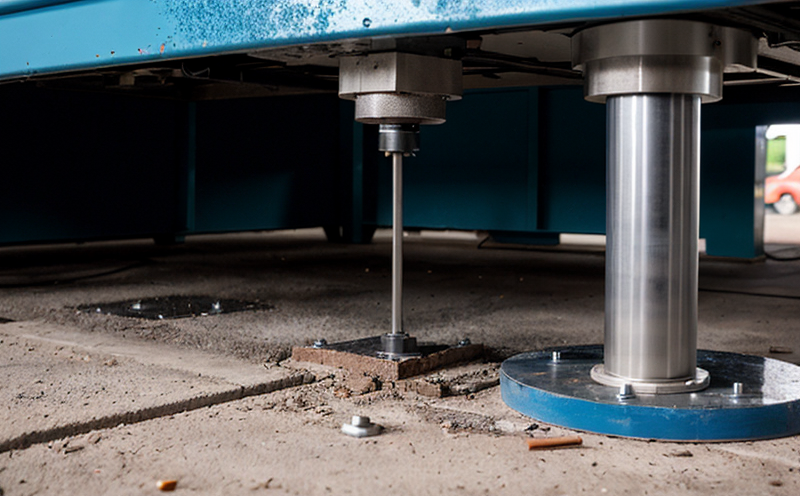ASTM F3122 Distortion and Residual Stress Testing of AM Metals
The ASTM F3122 standard is a critical tool for manufacturers in the additive manufacturing (AM) sector, particularly when dealing with metals. It provides a method to measure distortion and residual stress levels that can occur during various stages of the AM process. This testing ensures product integrity by identifying potential issues early on, thus preventing costly reworks or failures downstream.
The importance of this test cannot be overstated as it helps in optimizing the design for additive manufacturing (DfAM), ensuring that parts are not only printed correctly but also perform optimally under various conditions. Distortion can lead to part failure if not addressed, while residual stresses contribute to long-term performance degradation.
The ASTM F3122 test is applicable across a wide range of AM processes including laser powder bed fusion (LPBF), electron beam melting (EBM), and directed energy deposition (DED). It's particularly useful for evaluating the quality of parts produced from metals like stainless steel, titanium alloys, aluminum, and cobalt-chromium. Understanding these stresses helps in tailoring post-processing techniques such as heat treatment or stress relief annealing.
The test involves several steps that include specimen preparation, testing setup, and data analysis. Specimens are typically prepared by selecting representative parts from the AM process. The testing apparatus used is designed to apply controlled loads on these specimens while measuring any resulting distortions and residual stresses. This can be done using specialized equipment capable of precise load application and displacement measurement.
Data collected during this test includes both quantitative measurements (such as strain or stress values) and qualitative assessments like visual inspection for surface quality. Reporting is comprehensive, covering all relevant parameters tested along with recommendations based on the findings. Compliance officers and R&D engineers benefit significantly from such detailed reports to ensure their products meet stringent industry standards.
Understanding ASTM F3122 also aids in risk management strategies by providing early insights into potential challenges associated with AM processes. By incorporating this testing into quality assurance protocols, organizations can enhance product reliability and customer satisfaction.
Scope and Methodology
| Parameter | Description |
|---|---|
| Specimen Preparation | Selecting representative parts from the AM process. |
| Testing Setup | Applying controlled loads on specimens for measurement of distortions and residual stresses. |
| Data Collection | Including strain or stress values, visual inspection results, etc. |
| Reporting | Covering all relevant parameters tested along with recommendations based on the findings. |
The ASTM F3122 standard specifies detailed procedures for performing distortion and residual stress tests. These include precise methods for specimen preparation, calibration of test equipment, application of loads, measurement techniques, and data analysis. Compliance officers need to ensure that all these steps are followed rigorously to obtain accurate results.
One key aspect is the selection of appropriate materials for testing. Metals like stainless steel, titanium alloys, aluminum, and cobalt-chromium are commonly used in AM processes and require specific handling during specimen preparation. Proper material characterization before testing ensures reliable test outcomes.
Why Choose This Test
- Identifies potential issues early on, preventing costly reworks or failures downstream.
- Optimizes the design for additive manufacturing (DfAM), ensuring parts are printed correctly and perform optimally under various conditions.
- Evaluates the quality of AM parts produced from metals like stainless steel, titanium alloys, aluminum, and cobalt-chromium.
- Provides insights into potential challenges associated with AM processes through early detection of distortions and residual stresses.
- Helps in tailoring post-processing techniques such as heat treatment or stress relief annealing to improve part quality.
- Ensures product integrity by identifying and addressing distortion and residual stress issues before they become critical problems.
- Enhances product reliability and customer satisfaction through comprehensive compliance with industry standards.
By choosing ASTM F3122 testing, organizations can gain a competitive edge in the AM sector. It enables them to produce higher quality parts that meet stringent specifications, leading to enhanced performance and durability of end products.
Environmental and Sustainability Contributions
The ASTM F3122 standard plays a role in promoting sustainability within the additive manufacturing industry. By identifying and addressing distortion and residual stress issues early on, this testing helps reduce waste by minimizing reworks and failures. This results in more efficient use of resources during production.
Additionally, ensuring product integrity through these tests can lead to longer-lasting products, reducing the need for frequent replacements or repairs. This not only benefits manufacturers but also contributes positively to environmental conservation efforts by extending the lifecycle of materials used in AM processes.
The focus on quality and reliability also fosters innovation within the sector, driving towards more sustainable practices overall. As additive manufacturing continues to grow, ensuring that each step is optimized for efficiency and sustainability will be crucial for its long-term success.





